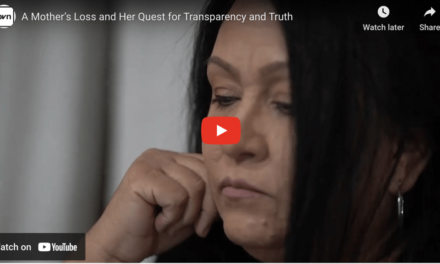
B. Smith, who broke barriers for African-American women in modeling, media and business, is one of many people of color who succumbed to Alzheimer’s disease.
By Nadine Matthews
Special to the AFRO
A new data brief by USAgainstAlzheimer’s Center for Brain Health Equity identifies the 41 congressional districts that overlap with the top 25 counties with the highest prevalence of Alzheimer’s and related dementias (ADRD) among Black and Latino Americans in the Medicare Fee for Service program.
The information indicates that the time for intervention in Black and Latino communities is now. Without intervention, by 2030 nearly 40% of all Americans living with ADRD will be Latino or Black.
Stephanie Monroe, executive director of AfricanAmericansAgainstAlzheimer’s, part of the UsAgainstAlzheimer’s network, spoke to the AFRO about the report, the social determinants of health that contribute to increased prevalence of ADRD and policy recommendations for bending the curve of this disease which impacts millions of American families.
The study, she explained, “Looks at how high the prevalence of ADRD in a congressional district, looked compared to a district with low prevalence.” What they found was that so-called, social determinants of health (SDOH) seem to be the common thread. “Social determinants of health,” Monroe explained, “includes things like access to health insurance, safe housing conditions, economic stability, access to nutritious food, access to clean environments, exercise. They also include other things that aren’t as easy to measure like systemic racism.”
“We found that, in general, the counties most impacted by ADRD are plagued with systemic inequities that can be acted upon. Those communities were less likely to have health insurance, access to exercise, a Bachelor’s degree or higher and were more likely to have lower incomes and report poor health.”
Monroe, a Maryland native whose own father lives with Alzheimer’s, stated that her organization had started seeing some troubling trends but felt they needed hard data in order to get policy-makers to take action. “We needed them to be able to visualize, in their specific communities, what is happening.”
To do so they partnered with the Urban Institute, with support from the National Minority Quality Forum. The latter organization Monroe stated, “Have created a series of indexes looking at certain diseases down to the zip code level using Medicare data throughout the country.” They overlaid the original county data on Alzheimer’s by congressional district, enabling them to take their appeal directly to the people most empowered to effect changes.
As the old adage by Ben Franklin goes, “an ounce of prevention is worth a pound of cure.” Monroe hopes the data will help policy makers implement preventive measures in Black and Brown communities hardest hit by Alzheimer’s. “There are costs to Medicare in a community that has a high rate of Alzheimer’s. Not to mention caregiver costs that are not covered by the government and that can be thousands of dollars. We’re lobbying for paid family and medical leave to cover caregiver costs.”
One of the issues lies with who participates in medical trials that involve research into Alzheimer’s. “Over 95% of research participants are not Latino or African-American but Blacks are two to three times as likely and Latinos are at least one and a half times as likely to develop Alzheimer’s. So why are Blacks and Latinos not participating in drug trials?”
In addition, Monroe’s organization recommends that government initiatives be more tailored to the needs of the communities they aim to help. “Now that we know where people live, let’s make sure we give those communities what they need. Some communities need higher investments made in them because of the higher prevalence.”
Monroe also pointed to the need for additional investments in education and economic opportunities in these high prevalence neighborhoods. “Kids need access to high quality pre-schools so they don’t start school behind which can impact their cognitive development later in life.”
Monroe’s organization is also trying to establish a national goal for Alzheimer’s prevention. “Science shows us that 50% of dementia cases could be addressed if we tackle these lifestyle changes like education, social contact and physical activity and decrease hearing loss, hypertension, depression, obesity, head injuries.”
Monroe offers that there are certain things we can all do outside of government interventions to lessen the risk of getting Alzheimer’s. “If you can walk, if you can lift canned goods, if you can walk up and down stairs or sit in a chair and lift yourself without holding on, you can exercise.” Changes in nutrition, she points out, will also pay brain health dividends. “Cut down on sugar and alcohol consumption and make sure you incporporate fruits and vegetables. Make sure you have colorful plate.”
Help us Continue to tell OUR Story and join the AFRO family as a member – subscribers are now members! Join here!
The post Alzheimer’s prevention is needed in minority communities now appeared first on AFRO American Newspapers .










